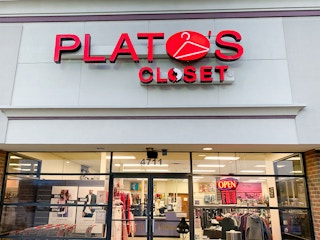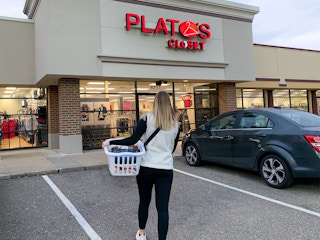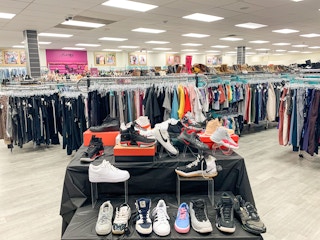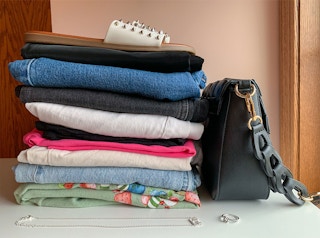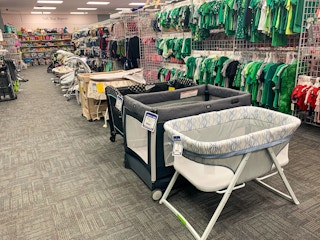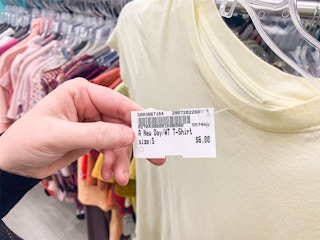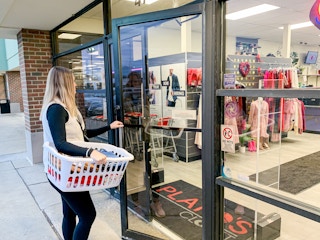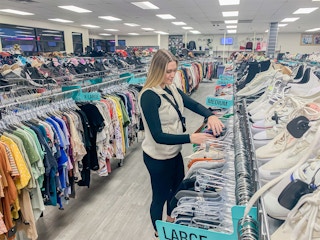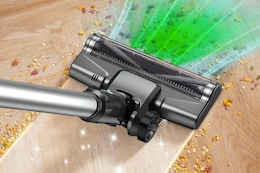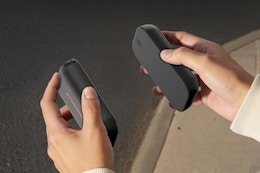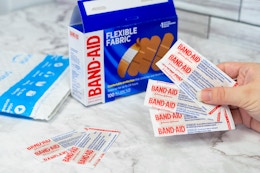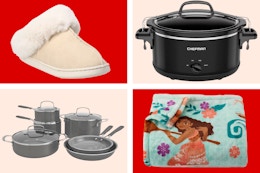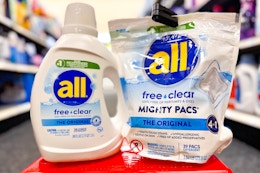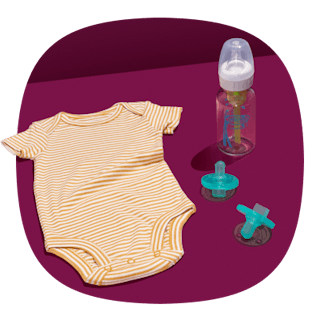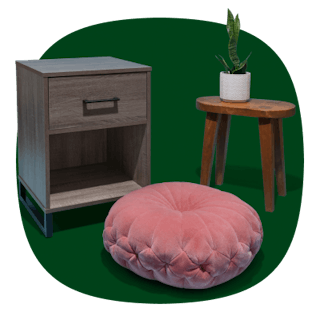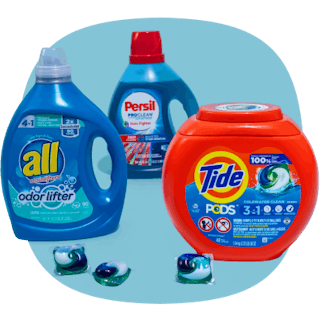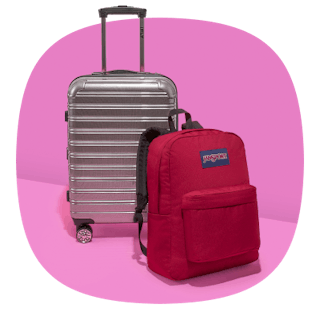If you’re looking for a way to save money and make money at the same time, let me introduce you to the world of consignment shops. Although many people assume consignment shops and thrift stores are the same thing, they’re actually very different. Put simply, consignment stores sell goods for an owner, whereas thrift stores sell people’s secondhand goods. If you bring something into a consignment store, you will make a profit when (or if) that item sells.
Consignment stores and thrift stores do have a few similarities, though. For starters, they both sell used items like clothing, furniture, cookware, accessories, and everything in between. These secondhand goods are much more affordable than brand-new items, which means you’ll be saving money no matter what you buy.
Now that you have some background on the basics of consignment shops, I’ll break down everything else you need to know. I’ll explain exactly how they work, what you can sell, what you can buy, how much they pay, and more. With this guide, you can decide for yourself if consignment stores are worth it or not.
Text DEALS to 57299 and be the first to know about the hottest deals each day.
1. Consignment shops resell gently used items on your behalf.
Consignment shops sell gently used items. When you “consign” something, you’re giving it over to someone else to take care of, and that’s what these stores do.
Stores that offer consignment can sell just about anything you can think of, including clothing (a popular consignment shop for clothing is Plato’s Closet), home goods, decor, kitchenware, and more. You can both buy and sell goods to consignment stores.
2. They’re not the same thing as thrift stores because YOU make some profit.
Consignment stores differ from thrift stores in one main way. At consignment stores, people consign their goods to the shop and receive part of the profit when the items sell. At thrift stores, people donate their items to the store and do not make any profit.
While you won’t make money from donating items to thrift stores such as Goodwill, you can get a tax deduction. If you want to try and make money from selling items like clothing, there are some stores that will pay you for the items you donate, including Crossroads Trading, Buffalo Exchange, and TheRealReal. (More on those in a minute.)
Related: We found the 50 best things to sell to make money.
3. You can find consignment shops near you with a quick online search.
To find a local consignment store, it’s best to check online. Once you find a location, call to see how much they might pay you for your goods and to confirm their hours. Since most consignment stores are mom-and-pop shops, their store hours, locations, and profit splits can vary — by a lot.
TIP: When you visit a consignment shop, I suggest chatting with the people who work there. Consignment stores set their own terms for how their consignments work, so they can be different across the board. It’s important to know the store policies before committing to sell your items. Plus, by going in and talking to someone, you might even be able to score a higher percentage of your sale. It’s the human element, ya know?
How do online consignment stores work?
More and more online resale sites are popping up to offer online consignment. Sites like Mercari, ThredUp, and Poshmark let you sell your gently used items to shoppers using their marketplace. But the fees (commission) they take can range from a flat fee of $2.95 all the way up to 45% of the sale.
Related: See our full guide on where to sell your clothes online for the most money.
4. In-store consignment has fewer shipping hassles, but you won’t reach as many buyers as online.
You can either go to a consignment store in person or online. Personally, I like in-person consignment stores because they’re easier (you don’t have to ship things like you do when you sell something online), but the choice is yours.
If you choose to sell to an online consignment store like ThredUp, you might reach more buyers. To sell something to ThredUp, just request a Clean Out Kit (aka a bag to ship your items in), fill it up, and request pickup from USPS. From there, ThredUp will take care of the marketing and shipping for you. Once your item sells, you will get about 60% of the profit. If ThredUp doesn’t accept your item to sell, they’ll donate it for you.
5. Consignment shops can be picky about what they accept.
If you want to sell something to a consignment store, you’re in luck because you can sell just about anything! Hear me out though. Because consignment stores are only making a split of the profit (you get to keep your portion), they can be very particular about what they accept. This is because: 1.) They have to find room to sell it in their store, and 2.) They want items to sell, so they won’t accept things that they know won’t sell.
To make sure an item is sellable at a consignment store, I have a few tips:
- In terms of clothing, make sure the clothes are clean (wash them before you bring them in) and free of any holes or stains.
- For furniture and home goods, make sure they are also clean (wipe them down) and in good condition. (Think: Would I want to buy an old chair with broken legs? No. So why would anyone else?)
- As for jewelry, decor, and kitchenware, these items should also be in decent condition.
6. Here’s the process for how to sell something to a consignment store.
To sell something to a consignment shop, here’s the process:
- Bring the item into a store.
- The employee will decide if they want to sell the item or not.
- If they want to sell it, ask them how much they want to sell it for and how much of a profit you will make. (Most consignment stores usually have a 60/40 payout, which means you make 60% of the profit and they keep 40%.)
- If the terms sound good to you, you’ll hand your item over.
- When/if the item sells, the store will notify you, and you’ll make money!
TIP: If the consignment store doesn’t want to sell your item, take it to another consignment store for a second look, or donate it.
7. Baby and kids’ clothing and furniture are bestsellers at consignment shops.
The items that sell the most at consignment stores are children’s clothing and furniture.
In terms of baby and kids’ clothes, these items sell best since little ones grow fast. As a shopper, you can usually find kids’ clothing for anywhere from $2 to $10 at consignment stores, which is way cheaper than if you were to buy these items new at a big retailer.
As for furniture, the items that sell best include chairs, tables, and sofas. If you’re looking to sell your old couch to a consignment store, you can expect to make anywhere from $100 to $500+ in profit. Leather couches in good condition can sell for even more. On top of that, furniture sets (like a dining room table and all chairs) can make you a good chunk of money since nice sets are often hard to find. Whether you’re looking to buy or sell furniture on consignment, make sure it’s in good condition.
8. Clothes can sell for $2 – $75, while furniture generally goes for $25 – $600.
There’s no way to predict how much any one consignment store will pay you for an item. The amount of money you make depends on how much they sell it for, how long it takes to sell, and how much of a profit the consignment store takes.
With that said, clothes generally sell for anywhere between $2 and $75, while furniture can sell for about $25 to $600, depending on the piece. To make the most money for the items you sell to a consignment store, be sure the items are in good condition. On top of that, make sure the consignment store is not taking more than half of the profit. (Try to negotiate to get about 70% of the sale if you can. The industry average is a 60/40 split, with you keeping 60%.)
9. Try to negotiate to get 70% of the sale price if you can (the standard is 50% – 60%).
The amount of money that a consignment store will pay you for an item depends on a few things. First, what is the item? If it is a big-ticket item like furniture or electronics, you’ll get paid more than if you were selling small trinkets or a T-shirt.
On top of that, you must also take into account how much the consignment store is taking from your profit. (Since they are essentially selling your item for you, they take some of the profits.) Most consignment stores take about 30% – 50% of profits.
Lastly, it matters how long your item is on the market. If your item doesn’t sell for months, the consignment shop might knock down the price, which means you will make less money overall.
10. You can find pretty much anything at consignment stores — just not brand-new items.
You can buy just about anything you could think of at a consignment store. Think furniture, clothing, kitchen tools, decorative accents, home goods, and more. Just keep in mind that these items will most likely be gently used, not brand new.
11. If you see something you like, you can haggle a little or wait for the price to drop.
For the most part, if an item is at a consignment store for more than six months to a year, it will decrease in price. As I mentioned earlier, though, all consignment stores have a different process, so this might not be the case across the board.
If you have your eye on an item at a consignment store, I would recommend talking to a store employee and seeing if they can give it to you for cheaper. The only problem with waiting to see if an item decreases in price over time is that someone else might buy it first.
12. Consignment shops are definitely worth it for buyers; for sellers, it depends.
Depending on what you’re looking for, consignment stores can definitely be worth your time and money if you don’t mind gently used items. You can find cheap couches, cool clothes, cute home decor, and so much more for a fraction of the price you’d pay for getting them new.
As for selling to consignment stores, that can be trickier. You never know when or if someone will buy your items, and if they do, you’ll have to split your profit with the store. Regardless, it’s a nice way to make a little cash if you don’t need it fast.
TIP: When you clean out your home or closet, make two piles of things you want to get rid of. One pile can be for items you’ll sell at a consignment store, and the other can be for items that are better to donate.
Download the KCL app to add and redeem coupons in store




